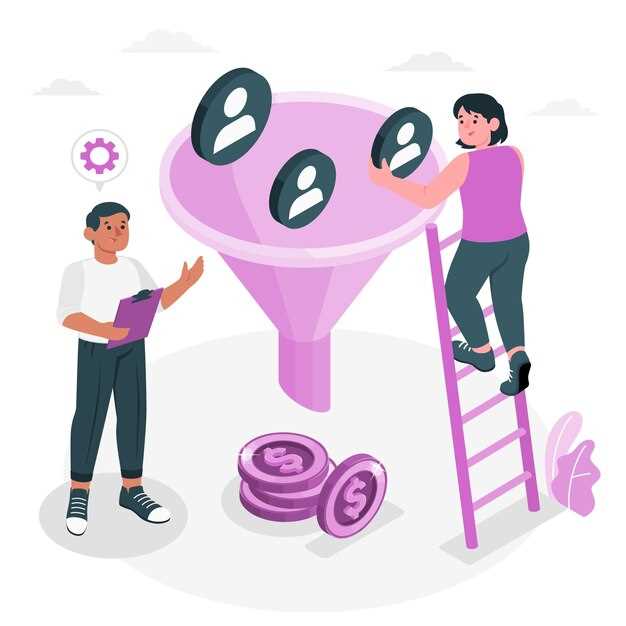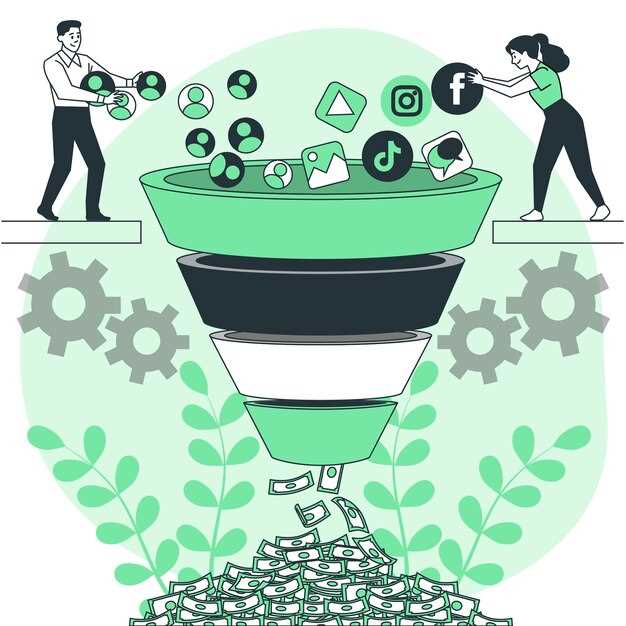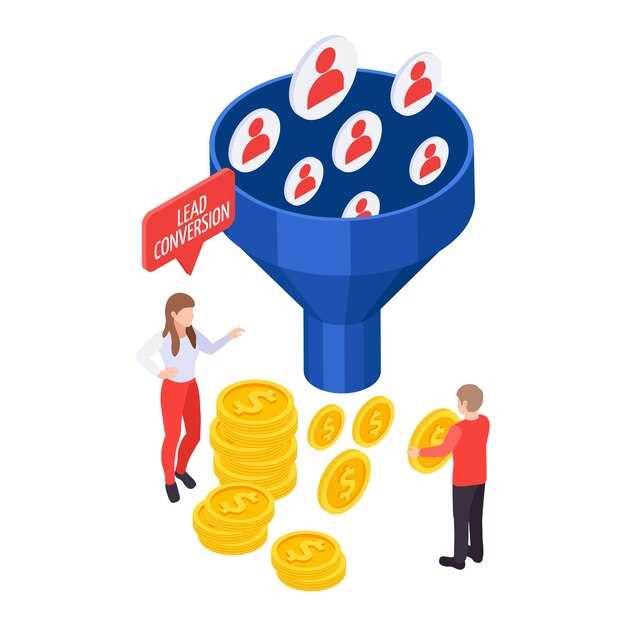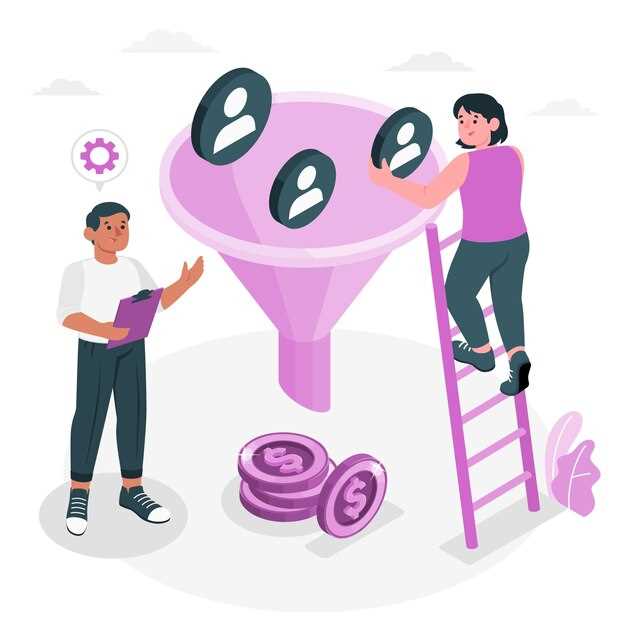Leverage compelling language to guide potential customers smoothly through your sales funnel. Rather than generic messaging, focus on crafting texts that speak directly to the needs and desires of your audience. By doing so, you can significantly increase conversion rates, converting interest into tangible leads and eventually, loyal customers.
Begin by understanding your customer’s journey. Map out each stage of the sales funnel and identify specific questions or concerns potential customers might have. Use this information to tailor your messages. For instance, at the awareness stage, infuse your text with information on how your product or service can solve a specific problem. Include statistics and testimonials to build trust and credibility.
At the consideration stage, your texts should offer comparative insights. Highlight unique features and benefits that set your product apart from competitors. Use bullet points or lists for clarity, making it easy for prospects to absorb key advantages quickly. Keep communication friendly and informative, supporting your claims with solid evidence and customer stories.
Finally, for prospects nearing a decision, refine your calls to action (CTAs) to be as persuasive as possible. Use action-oriented words that encourage immediate response. Offer limited-time discounts or bonuses to create urgency. Ensure your contact information is evident and easily accessible, further streamlining the decision-making process for your potential customers.
Crafting Compelling Copy for Each Stage of the Sales Funnel

Distinguish your message by tailoring your copy for each specific stage of the sales funnel. This approach ensures your communication is resonant and impactful.
- Awareness Stage: Focus on attracting potential customers by highlighting their challenges and showing you understand their pain points. Use clear and engaging headlines that immediately address a problem or need. For example, “Struggling with [Problem]? Discover How We Can Help!” Introduce yourself as a helpful guide rather than pushing a hard sell.
- Interest Stage: Develop curiosity further by offering insightful content that informs and educates. Utilize data-driven insights and case studies to build credibility. Craft language that reinforces the value your solution brings, piquing interest with phrases like “Learn How Our Solution Cuts Costs by 30%.”
- Consideration Stage: Present detailed information about your product or service, emphasizing unique features that set you apart. Include customer testimonials and reviews to demonstrate trustworthiness. Phrases like “Here’s why [Product/Service] outperforms the competition” create a positive image.
- Intent Stage: Encourage decision-makers to take the next step with clear, compelling calls to action. Highlight time-limited offers or free trials to create a sense of urgency. Messages like “Start Your Free Trial Today–Offer Ends Soon!” drive action.
- Purchase Stage: Simplify the purchase process by providing clear instructions and reassurances. Ensure your copy is straightforward and confirms the benefits they are about to secure. Confirm decisions with statements such as “You’re just a step away from solving [Problem].”
- Retention Stage: Foster ongoing relationships with consistent communication and valuable content. Share tips, updates, and exclusive offers to maintain engagement. Statements like “Unlock special benefits for loyal customers” help retain interest and loyalty.
Remember to continually evaluate and adapt your copy based on feedback and performance metrics. Well-crafted communication reflects an understanding of customer needs, driving conversions at every stage.
Understanding the Customer’s Journey and Its Impact on Copy
Identify each stage of the customer’s journey to craft copy that resonates with their specific needs. At the awareness stage, capture attention by addressing common problems and posing thought-provoking questions. Offer valuable insights or surprising data to engage your audience. In the consideration stage, highlight the benefits of your product by showcasing success stories or case studies. Provide comparative analyses to help potential customers evaluate their options.
During the decision stage, reduce purchasing barriers by incorporating clear calls-to-action and testimonials that emphasize your product’s unique value. Ensure the copy reflects a sense of urgency with limited-time offers or exclusive deals. Post-purchase, maintain customer loyalty by providing helpful tips or personalized recommendations through follow-up communications.
Create distinct value propositions at each interaction point to enhance message relevance. Utilize A/B testing to experiment with different copy variants and gather data to understand which messages resonate most with your audience. Analyze metrics such as click-through rates, conversion rates, and customer feedback to iterate and refine your messaging approach.
Remember that successful copy considers the emotional and rational factors influencing customer decisions. Empathize with your audience’s lifestyle, challenges, and aspirations to create a narrative that aligns with their perceptions and motivates action.
Tailoring Messaging to Capture Attention in the Awareness Stage
Leverage the power of concise, engaging headlines to grab attention immediately. Craft messages that address specific pain points or desires of your target audience. Utilize active words and stirring language to create urgency or curiosity.
- Focus on a compelling headline: Ensure your headlines are clear and promise a solution or a benefit.
- Utilize emotional triggers: Tap into emotions such as joy, surprise, or fear to make your message memorable and relatable.
- Include statistics: Use numbers to add credibility and attract attention quickly.
- Personalize content: Use segmentation to tailor messages that address the unique interests of different audience segments.
- Leverage storytelling: Create narratives that your audience can see themselves in, establishing a connection and enhancing engagement.
- Optimize visuals: Utilize striking images or infographics that complement your message and captivate your audience.
- Implement action-oriented language: Encourage the audience to take the next step by using verbs that indicate action or change.
Successfully capturing attention in the awareness stage necessitates a deep understanding of your audience combined with strategic messaging techniques. Harness these tactics to establish a robust initial connection with potential customers, setting the stage for downstream sales funnel success.
Nurturing Interest with Enthralling Descriptions During Consideration
Transform product descriptions by focusing on sensory details and specific use cases. Highlight how your product or service addresses specific needs, painting a vivid picture of its real-world impact. For instance, if marketing a coffee machine, rather than simply stating it makes coffee, describe the rich aroma, the convenience of waking up to freshly brewed coffee, and the smooth, comforting taste that rivals a local café.
Use storytelling to create an emotional connection. Share a brief customer story or testimonial illustrating how their problem was solved or their life was enriched thanks to your product. Keep the narrative authentic and relatable, reinforcing the genuine benefits.
Incorporate visually stimulating language that speaks directly to the imagination. Utilizing metaphors and similes can help potential customers envision themselves using and loving the product. For instance, “Our vacuum cleaner archives the cleanliness of a sunny spring day, leaving your home feeling refreshed and renewed.”
For technical products, make complex features approachable and exciting. Break down features into simple benefits, sparking curiosity and eagerness to learn more. Rather than listing specifications, explain how these enhance user experience, ensuring clarity without overwhelming potential buyers.
Finally, integrate actionable language encouraging next steps. Phrases like “Explore our features,” or “Discover your next favorite gadget,” guide potential buyers with subtlety, enhancing engagement while moving them closer to making a purchase decision.
Encouraging Action with Convincing Calls-to-Action in the Decision Stage
Create urgency in your call-to-action (CTA) by incorporating time-sensitive language. Highlight terms like “Limited Time Offer” or “Only a Few Left” to push prospects toward swift decisions. This technique taps into the FOMO (Fear of Missing Out) effect, increasing the likelihood of conversions.
Ensure your CTA is clear and specific about the desired action. Replace vague terms like “Click Here” with direct instructions such as “Download Your Free Guide” or “Start Your Free Trial.” Concrete actions eliminate ambiguity and guide the prospect’s decision-making process.
Personalize CTAs based on user behavior and preferences. Use data-driven insights to tailor messages, such as “Complete Your Purchase, [Name],” which speaks directly to the prospect and enhances engagement by resonating personally.
Integrate compelling visuals that catch the eye and reinforce the CTA’s impact. Utilize contrasting colors and bold fonts to make the action button or text stand out. The visual hierarchy is key; the CTA should be the focal point on the page, drawing immediate attention.
Test different CTA placements across your pages to determine what works best for your audience. A/B testing various positions–whether at the top, middle, or bottom of the page–can reveal optimal points for engagement. Consider putting CTAs both above the fold for immediate visibility and after valuable content for informed decision-making.
Building Loyalty with Personalized Follow-Ups Post-Purchase
Send a thank-you email immediately after purchase. Customize it by including the customer’s name and highlighting their purchased product. Personal touches can increase email open rates by up to 29%.
Offer exclusive discounts or early access to new products as a token of appreciation. Tailored offers increase repeat purchases by 23% on average. Make these offers subject-specific, based on customer purchase history.
Request feedback on the purchase experience and solicit suggestions. This active engagement not only provides you with valuable insights but also boosts retention rates by 30%. Respond promptly and personally to make the customer feel valued and heard.
Implement a loyalty program that rewards points for each purchase, which can be redeemed for future discounts. Programs like these see repeat sales up to 40% higher than those without.
Keep customers engaged with informative content related to their purchase. This could be a tips-and-tricks email or a how-to guide. Engaging content can increase the likelihood of repeat purchases as much as 20%.
Finally, segment your customers and tailor communication strategies accordingly. Segmentation allows messages to stay relevant, ensuring higher engagement and loyalty.
Techniques for Enhancing Persuasiveness in Texts

Begin by personalizing your message. Tailor your content to address the specific needs and desires of your target audience. Use their language, reflect on their pain points, and present clear solutions to establish a strong connection.
Incorporate powerful storytelling. Craft narratives that engage readers emotionally, helping them visualize the benefits of your product or service. Leverage characters, conflicts, and resolutions that resonate authentically with your audience’s experiences.
Make your arguments logical and coherent. Support claims with credible evidence, such as statistics or testimonials, to build trust and authority. Present information in a structured, easy-to-follow manner, guiding your reader seamlessly from one point to the next.
Create a sense of urgency. Use time-sensitive language that motivates action. Words like “limited-time offer” or “exclusive deal ending soon” can encourage prompt decision-making, reducing the likelihood of postponing purchases.
Implement clear calls to action. Use precise language that directs readers towards the next step, whether it’s signing up for a newsletter, downloading a resource, or making a purchase. The call to action should stand out and align with the reader’s interests.
Acknowledge possible objections and counter them effectively. Anticipate hesitations your audience might have and address them directly, providing reassurances or additional information to alleviate concerns.
Regularly test and optimize. Experiment with different headlines, formats, and messages. Analyze the results and refine your approach based on feedback and performance metrics to continually enhance persuasiveness.
Utilizing Psychological Triggers to Drive Engagement
Leverage scarcity to prompt immediate action by highlighting limited quantities or time-sensitive offers. Communicate a sense of urgency with phrases like “only a few left” or “offer ends soon” to create a fear of missing out. Pair scarcity with exclusivity by making your audience feel special through phrases such as “exclusive offer for our valued customers.”
Incorporate social proof to strengthen credibility. Display customer reviews, testimonials, or case studies prominently. Present statistics that reflect satisfaction rates or the number of users who trust your product.
Consistency is key. Ensure alignment in messaging across all touchpoints, from ads to landing pages. This builds trust and reliability. When presenting products or services, use the principle of loss aversion. Communicate what your audience could lose by not acting, using examples that resonate emotionally.
| Psychological Trigger | How to Implement |
|---|---|
| Scarcity | Highlight limited-time offers |
| Social Proof | Showcase testimonials and ratings |
| Exclusivity | Promote member-only benefits |
| Consistency | Ensure messaging alignment |
| Loss Aversion | Emphasize potential losses |
To tap into authority, use endorsements from industry experts or influencers. Their validation can sway opinions and drive engagement significantly. Finally, construct narratives that tap into emotional storytelling. This makes your brand relatable and memorable, creating a deeper connection with your audience.
Incorporating Social Proof to Strengthen Credibility
Leverage social proof by featuring customer testimonials prominently on your website. Display real-time reviews to assure potential buyers of the authenticity of your brand. Embed reviews directly from platforms like Google and Yelp to offer an unfiltered view of customer satisfaction.
Utilize case studies that demonstrate how your product or service has effectively met the needs of others. These stories should include specific data points, such as percentage improvement in efficiency or sales growth, to provide tangible evidence of your success.
Build trust by showcasing user-generated content on your site. Encourage customers to share their experiences through photos or videos and feature this content on landing pages. Not only does this build community but also creates a more relatable connection for prospective clients.
Integrate logos of reputable clients or partners under an “As Seen On” or “Our Clients” section. Potential customers often feel more confident buying from businesses that others are partnering with or endorsing.
Highlight any awards or recognitions your company has received. Place these accolades on your homepage to immediately establish credibility with new visitors.
Finally, create urgency and a sense of popularity by showing the number of products sold or customers served. Simple counters or progress bars can be effective tools in convincing skeptical buyers of your brand’s success and reliability.
Applying Storytelling to Resonate with Your Audience
Focus on crafting narratives that align with your audience’s experiences and aspirations. Start with identifying the core values and challenges of your target group. Create narratives that reflect these elements. This establishes a strong foundation for connection and engagement.
Integrate relatable characters into your storytelling. Your customers should see themselves in these characters, which enhances empathy and attachment to your brand. Develop characters that face similar challenges and ultimately find solutions through your offerings.
Utilize the three-act structure–setup, confrontation, and resolution. Begin by setting the stage and introducing the problem. Next, delve into the conflict or barrier your audience might face. Conclude with how your product or service provides a resolution, ensuring the transformation feels authentic and attainable.
Incorporate emotional triggers throughout your narrative. Leverage emotions like hope, fear of missing out, or desire for betterment. This helps in creating a lasting impression, encouraging movement through the sales funnel more effectively.
Maintain authenticity in your storytelling. Avoid exaggerating products’ benefits beyond believable limits. Customers are quick to discern inauthentic claims, which can harm credibility.
Finally, provide social proof through storytelling. Include testimonials or success stories that showcase real-life applications and benefits. This not only reinforces the value proposition but also builds trust among potential customers.
Video:

🔥The Ultimate Step-By-Step Landing Page Guide🔥(My $1.33 Billion Secret Selling System REVEALED)
🔥The Ultimate Step-By-Step Landing Page Guide🔥(My $1.33 Billion Secret Selling System REVEALED)
Q&A:

How can persuasive texts improve the efficiency of my sales funnel?
Persuasive texts can significantly impact your sales funnel by engaging potential customers and encouraging them to move from one stage to the next. By crafting messages that resonate with your audience’s emotions and needs, you can capture their interest more effectively. This, in turn, leads to higher conversion rates as prospective customers feel understood and valued. Techniques such as using strong calls-to-action, addressing common pain points, and highlighting benefits can guide leads through the funnel more smoothly, ultimately increasing sales.
What are some effective strategies for creating persuasive texts for different stages of the sales funnel?
For the awareness stage, focus on capturing attention with engaging headlines and informative content that provides value. During the interest stage, build trust by offering detailed information and addressing potential customer concerns. In the decision stage, leverage social proof like testimonials and case studies to validate your claims. Finally, at the action stage, create urgency and a clear call-to-action to motivate conversion. Tailoring your messages to fit the specific needs and mindset of your audience at each stage is key to effectively guiding them through the sales funnel.
Can you give an example of a persuasive text that motivates potential customers to take action?
Sure! An effective persuasive text might look like this: “Transform your everyday routine with our innovative time-saving app. Join thousands of satisfied users who have already boosted their productivity. Sign up today and receive a risk-free trial for 30 days. Don’t miss this opportunity to simplify your life and accomplish more!” This message uses a clear call to action, highlights benefits, provides social proof, and offers immediate value through a free trial.
What common mistakes should I avoid when writing persuasive texts for my sales funnel?
Avoid using generic messages that fail to connect with your audience. Lack of personalization can make potential customers feel like just another number. Additionally, ensure your texts are clear and concise instead of being overly complicated or jargon-filled. Avoid making exaggerated claims that can’t be substantiated, as this can harm your credibility. Lastly, neglecting to include a strong call-to-action can result in missed opportunities for conversion, so always guide your audience on the next steps they should take.

